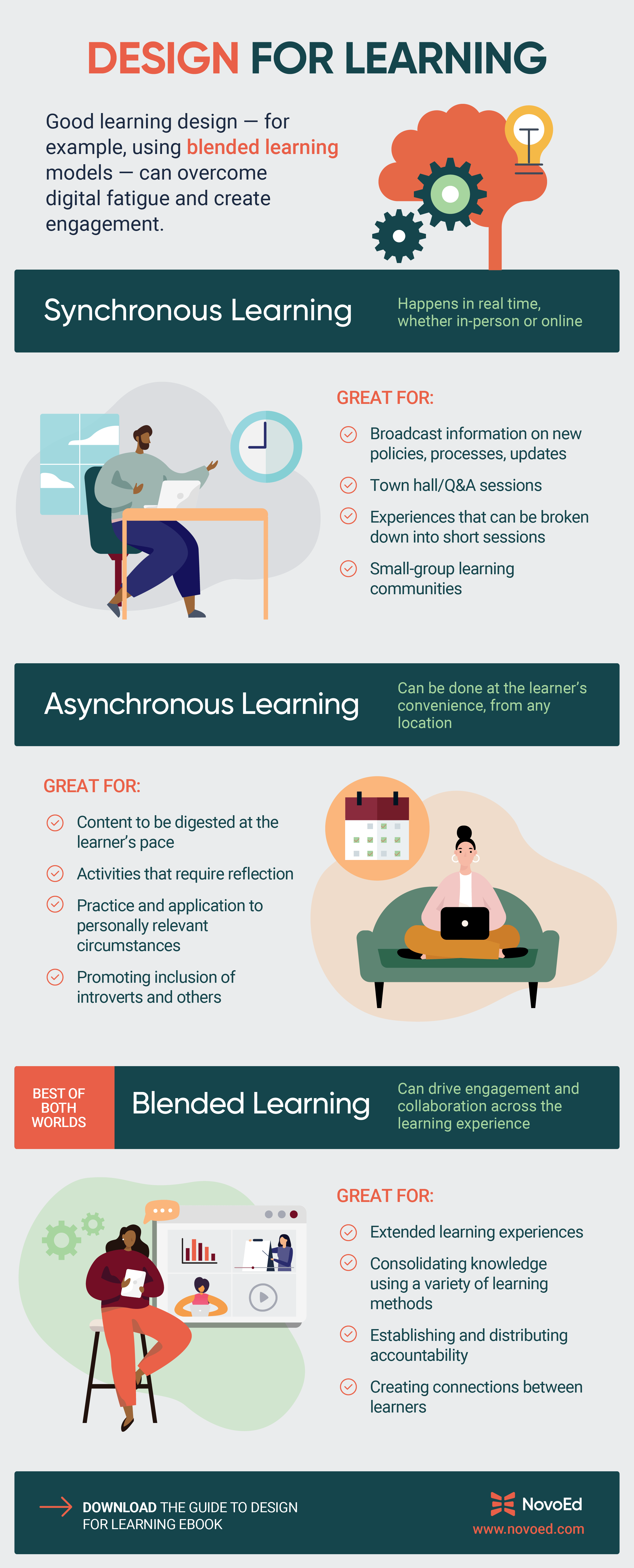Design for Learning Infographic

L&D leaders are seeking impactful ways to deliver the upskilling, reskillling and high-value capability building that employees require to adapt to rapid organizational change. They’re discovering that digital blended approaches are providing robust learning experiences — combining relevant live events with asynchronous learning elements, and tying them together into effective, engaging and efficient training journeys.
Learn more about optimizing synchronous, asynchronous, and blended modalities for meaningful learning in this infographic, or download the ebook for more in-depth information.

Good learning design — for example, using blended learning models — can overcome digital fatigue and create engagement.
Synchronous learning is great for:
Asynchronous learning is great for:
Blended learning can drive engagement and collaboration across the learning experience. It’s great for:
Download the eBook for more: The Guide to Design for Learning: Overcoming Digital Fatigue and Creating Engagement.
Design Thinking, Learning Experience Design, Learning Experience Design Services
Blog
In a Harvard Business School case study titled Creating a virtual internship at Goldman Sachs, the authors describe how The Goldman Sachs Group successfully transitioned a program serving thousands of interns into one that became entirely virtual.
Blog
Craig Weiss of The Craig Weiss Group, renowned for his expertise in learning technology, e-learning and AI in the workplace, spoke about AI In L&D: Roles, Risks, and Opportunities.
Blog
For Marriott, emerging from the pandemic presented a key opportunity to take stock and strategize how to improve worker retention and customer service — and the hospitality chain recognized that cultivating the best possible leaders was essential for navigating the changing landscape.
Blog
Learning management is a perennial challenge for L&D teams. Despite the emergence of more sophisticated learning and business analytics techniques, struggles with learning measurement persist at frustrating levels. Closing the gap between the boardroom and L&D around actual business or organizational impact is a required skill for learning leaders to master.
Blog
A social learning platform activates the deep and continual skill development needed for enduring behavior change in the context of modern business.
Blog
NovoEd enables executive education providers to build online learning experiences for custom executive education programs, open enrollment courses, and more.